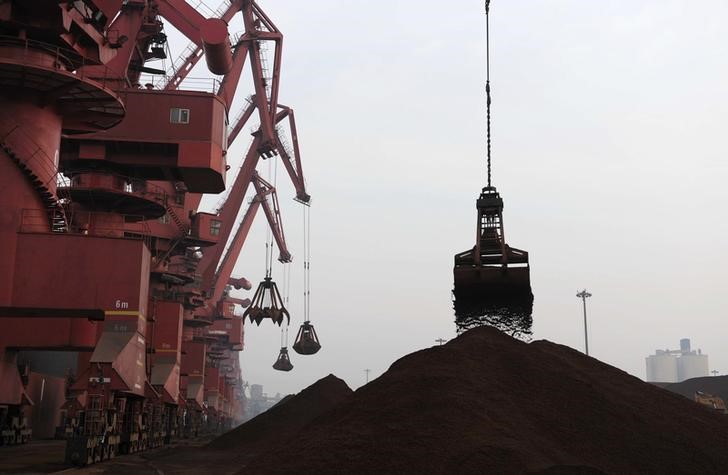(Repeats item issued earlier with no change to text. The opinions expressed here are those of the author, a columnist for Reuters. Graphic of SGX vs DCE iron ore futures: http://tmsnrt.rs/2kPjz0I)
By Clyde Russell
LAUNCESTON, Australia, Feb 1 (Reuters) - There is fundamental justification for the strong start to 2017 for iron ore prices, with imports by top buyer China remaining robust and showing no signs of easing.
A total of 86.6 million tonnes was reported as discharged at Chinese ports in January, according to data compiled by Thomson Reuters Supply Chain and Commodity Forecasts.
The risk is that this figure may actually rise in coming days as the ship-tracking and port data indicates that a further 13.2 million tonnes was due to have arrived at Chinese ports by Jan. 31.
If some of these cargoes were discharged before the end of month it could push total imports for January to close to 90 million tonnes, which would be the strongest monthly outcome since the record of 96.26 million in December 2015.
It's worth noting that ship-tracking data doesn't exactly align with customs figures, given differences in when cargoes are assessed as having been discharged, with the ship data typically under-reporting customs numbers.
For example, vessel-tracking data showed a total of 987.6 million tonnes of iron ore being discharged in China in 2016, which is 3.6 percent lower than the 1.02 billion tonnes reported by customs.
Nonetheless, the vessel-tracking data is a more timely indicator of the direction of China's imports, and they are painting a picture of ongoing strength.
This resilience does go some way toward justifying the strength in iron ore prices recently.
Front-month iron ore contracts on the Singapore Commodity Exchange SZZFc1 ended at $80.40 a tonne on Jan. 31, up 8 percent from the $74.28 they closed at on Jan. 3, the first trading day of the new year.
They are also more than double what they were a year ago, as China's record iron ore imports in 2016 were sufficient to eat away at the persistent supply surplus of the previous few years.
CHINA DOMESTIC PRICES OUTPERFORM
The increase in SGX futures, which are based on Steel Index spot prices for cargoes delivered to China, looks reasonable in the light of the ongoing strength in iron ore imports.
However, the 17.4 percent surge in iron ore futures on the Dalian Commodity Exchange (DCE) from Jan. 3 to Jan. 26, the last trading day before the current Lunar New Year holiday period, looks overdone.
The DCE contract DCIOcv1 rose from a close of 550.5 yuan ($80) a tonne on Jan. 3 to end at 646.5 yuan on Jan. 26, once again raising concern that the authorities in Beijing may take further action to cool what they see as unjustifiable speculative price increases in commodities.
There may be a bit of froth in the DCE contract, given it has risen from a discount to a premium to the SGX price if it is expressed in U.S. dollars.
DCE futures were $30.91 a tonne on Jan. 4 last year, while SGX contracts were $41.70, putting the Chinese domestic price at a discount of 26.5 percent.
As of Jan. 26, the DCE contract was $94 a tonne in U.S. dollars, a premium of 16 percent to the SGX price.
This disparity indicates that the Chinese contract is now overvalued compared to the international marker, but whether the gap narrows again will largely depend on the view of Chinese investors on the strength of the country's steel sector, as well as any cooling measures taken by the authorities.
On the supply side, iron ore is steadying, with the big three Australian producers, Rio Tinto (LON:RIO) RIO.AX , BHP Billiton (LON:BLT) BHP.AX and Fortescue Metals Group FMG.AX keeping production targets largely steady.
Top miner Brazil's Vale VALE5.SA expects to raise its output to 340-380 million tonnes this year from about 340-250 million in 2016 as its starts up the last of its major new mines, the S11D project.
<^^^^^^^^^^^^^^^^^^^^^^^^^^^^^^^^^^^^^^^^^^^^^^^^^^^^^^^^^^^ Graphic of SGX vs DCE iron ore futures
http://tmsnrt.rs/2kPjz0I
^^^^^^^^^^^^^^^^^^^^^^^^^^^^^^^^^^^^^^^^^^^^^^^^^^^^^^^^^^^> (Editing by Richard Pullin)
